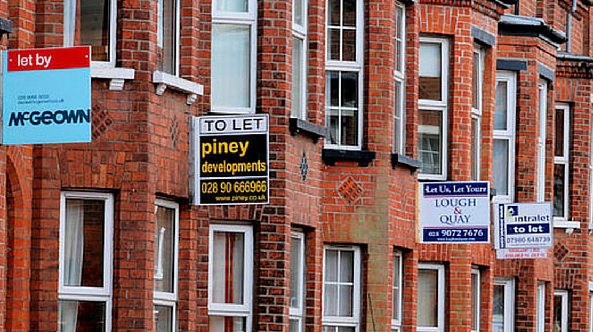The cost of mortgages can have a huge impact on the property market, and the latest data shows that lower mortgage rates and the prospect of further falls is boosting confidence.
Many things can impact outlook and sentiment within the property market, but recent changes within the economy and the housing sector specifically have combined to bring a more positive perspective for homebuyers, sellers and property investors.
Overall, affordability concerns – which had an impact on the sector in 2023 – have reduced, according to the latest Property Tracker report released by the Building Societies Association. Although the report found that the cost of borrowing was still the biggest barrier for many in buying a home, this has fallen to 62% of people compared with 71% back in September last year.
There are also fewer people with serious concerns about keeping up with mortgage payments over the next six months, with 9% saying they were not very confident or not at all confident – this was down from 12% who said the same in December last year, showing confidence is moving in the right direction.
Encouragingly, the vast majority of borrowers (90%) have no concerns about keeping up with their payments, while 85% of people said the same in December.
Why has affordability improved?
Mortgage rates have been falling since they reached their peak last summer, despite the fact that the Bank of England has held its base rate at 5.25% since August last year. This demonstrates the confidence that lenders have that interest rates will fall, while they try to remain competitive in the market.
While inflation did not follow the predicted trajectory in the latest announcements, it has come down significantly since its peak. Meanwhile, the latest wage growth data shows annual growth in regular earnings between November 2023 and January 2024 was 6.1%.
Looking at house prices, the steep inclines seen in the post-pandemic period slowed their pace of growth, as most analysts had predicted, which can boost affordability for buyers. However, house prices have returned to growth according to most indices, but at a more sustainable level.
The Building Societies Association survey found that 41% of people think house rises will rise over the next year, which is significantly higher than the 33% of respondents who said the same in December 2023. It is also the highest proportion expecting price rises since June 2022.
A more stable outlook
Paul Broadhead, Head of Mortgage and Housing Policy at the BSA said: “The overall reduction in mortgage rates following the peak in 2023 has been welcomed by homebuyers, and has seen an improvement in confidence in the housing market.
“While consumer prices remain high, wage growth has been strong meaning many households are now in a stronger position than six months ago. There is also an expectation that if inflation continues to fall, the Bank Rate may be cut this year, further easing pressures on borrowers and increasing mortgage affordability.
“Whilst affordability of mortgage payments remains the biggest barrier to house purchase, it is reassuring that this has reduced over the past six months. Expectations around house prices reflect this more stable outlook for the housing market.”
What is happening to mortgage rates now?
While the market has seen significant improvement over recent months in terms of falling prices and a greater availability of products for borrowers, there have been reports of a stall over the past few weeks. This is likely in response to speculation that the Bank of England will once again hold interest rates at 5.25% this week.
According to Moneyfacts, there were 6,000 mortgage products to choose from at the start of March, which is the widest selection since 2008, as lenders have widened their ranges and brought in added incentives such as cashback and low-deposit options.
However, at the moment, lenders are said to be pulling products off the shelves more quickly as they react to changes being made by other lenders, and this has brought the average mortgage deal shelf life down to 15 days. By comparison, the average shelf life was 28 days at the start of February.
In terms of rates, Moneyfacts research shows the average two-year fixed rate deal is now 5.8%, having fallen from closer to 7% last year, although this is an uptick compared with averages of 5.55% at the end of January.










